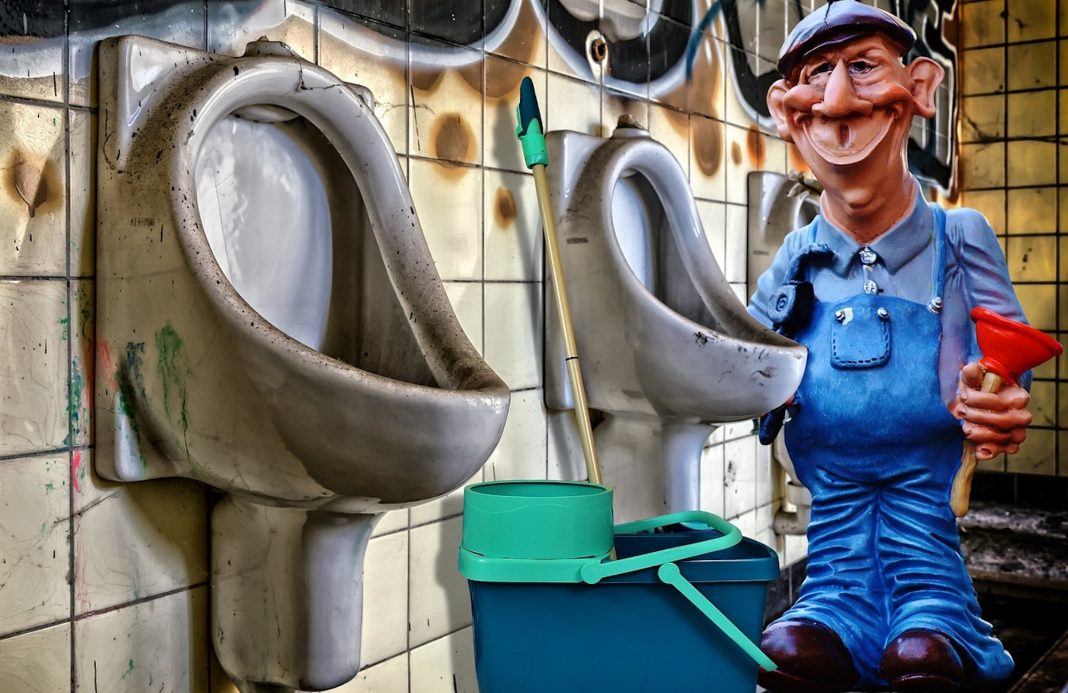The United States plumbing industry is worth a whopping 113 billion dollars. Do you have any idea why this sect of the American economy has managed to soar so high?
Because drains don’t unclog themselves!
That’s right! When hundreds of thousands of our drains get backed up across the country, distressed citizens are either picking up their phones or picking up their plungers to flex their DIY skills.
Expanding on that second option, as it turns out, you’ve got a lot of choices when it comes to what kind of plunger (or related tool) you lean on to manage your clog. Going through the following steps should help you to determine what you should pick up from your local hardware store to get your pipes flowing.
1. Note Where Your Clog Is Occurring
The first step to determining which plungers might be best suited to your needs is noting where your clog is taking place. For example, unclogging a hose and unclogging a sink would use two different plunging solutions.
The same is true for sinks and certain types of toilets.
Noting where your clog is occurring might seem like an obvious thing to do when looking for a solution. Still, you’d be surprised by how many people get sent to the hardware store to pick up tools for “a clog” without being able to describe exactly what they’re dealing with.
2. Assess the Severity of Your Clog
Surface clogs are much easier to undo than clogs that are occurring deep in your pipes. As a rule of thumb, if you can see your clog when looking down your sink, toilet, etc., you’re dealing with a superficial clog.
Sometimes, just loosening the block by pushing against it with any object will be enough to get water flowing again. Deeper clogs will need more forceful pressure to loosen. These harder jobs might require higher-end plungers so be prepared to discuss with a store representative what you assume the severity of your clog to be.
3. Appreciate the Fragility of Your Appliance
We’ve seen time and again people take their toilet plunger to their porcelain sinks only to break them off of the wall or damage their pipes. If you have concerns regarding the durability of the appliance you need to plunge, get professional help or use a more delicate tool. You can check similar reviews sites like this one with blaux portable ac reviews and they can help you.
Delicate tools for drain clogs might include “snakes” which you can work down your sink to loosen clogs without suction.
4. Explore Plunger Types
By now, you should have a beat on what kind of clog you’re dealing with. Armed with that information, you’ve got three traditional plungers you can choose from:
Sink Plungers
The classic red plunger that has a wood handle and a half-sphere base, is called a sink plunger. These are the most common plungers and are good for managing simple to moderate back-ups.
Flat surfaces are where this plunger shines so if you’ve got a toilet with a bad clog, you may want to consider the next option.
Toilet Plungers
Toilet plungers are a lot like sink plungers except they have a special shape at the bottom of their half-sphere which allows them to better drill into toilet drains. That unique feature creates seamless suction, even on flat surfaces.
Toilet plungers tend to have yellow handles and a black rubber base. In our opinion, these are the most versatile plungers you can have around the house.
Accordion Plungers
Accordion plungers are specifically for toilets and are characterized by their accordion-like bases. These plungers are often crafted from cheaper materials which make them more affordable. That affordability costs the unit flexibility and ease of control.
5. Consider Liquid Solutions
Some people will be able to save themselves the physical exertion of plunging their drains by ditching plungers altogether. Today, chemical companies have crafted several drain unblocking formulas that can simply be poured into trouble areas for near-immediate relief.
Chemical solutions work by eroding through clogs and take about an hour or so to be fully effective. Several popular brands like Draino and others are available at most supermarkets and hardware stores so experiment with different brands to see which ones offer the most power at the best price.
6. Call a Plumber
In today’s DIY world, everyone likes to save a few dollars by tackling problems on their own. When it comes to the health of your pipes though, particularly if you’re a homeowner, you may want to bite the bullet and call a plumber.
Plumbers can professionally unclog drains via effective and safe methods. Furthermore, plumbers should be insured which means if they cause damage to your pipes or appliances, your property will be covered.
Compare that to accidentally eating through your rental unit’s pipes with a cleaning solution and it quickly becomes apparent that outsourcing your work to a pro might be the best choice.
Figuring out Which Plungers Are Right for You
If you’ve learned anything from this article, it’s likely that there are several different solutions when it comes to plungers and the jobs they do. Our recommendation is to keep doing research on your particular clog and fixes that exist to decide on which plumbing iteration can safely manage your problem.
And remember, when in doubt, call in a professional!
Are you looking for more pragmatic advice on all of life’s common questions? If you are, check out more of the lifestyle content on our blog to fulfil your need to know!








